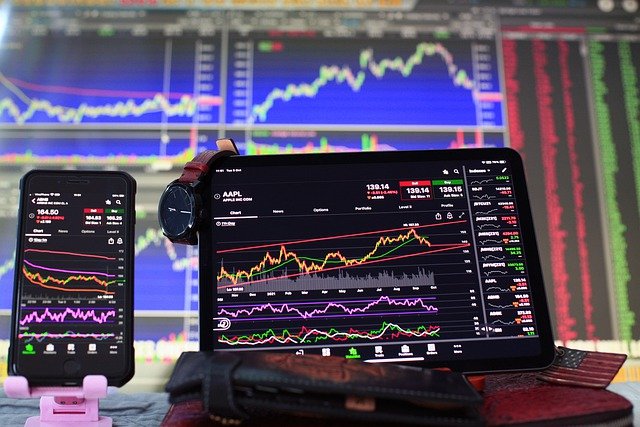COVID cases continued to rise across the U.S. on Monday and were trending at the highest levels seen since late November around the time that South African scientists first identified the highly transmissible omicron variant which quickly became dominant around the world.
Sine then, the BA.2 variant of omicron, and two other subvariants named BA.2.12 and BA.2.12.1, have helped spread infections.
The U.S. is averaging 90,423 cases a day, up 60% from two weeks ago, according to a New York Times tracker. Cases are higher in nearly every state, but the Northeast and Midwest are being particularly hard hit with case reports in both regions now higher than they were at the peak of last summer’s delta surge. There are concerns that case numbers are even higher, as many people are now testing at home and the data is not being collected.
The country is averaging 21,547 hospitalizations a day, up 24% from two weeks ago. The daily death toll has fallen below 400 to 311 on average as the official toll counted by Johns Hopkins University gradually edges toward the one million mark. The New York Times dedicated a section to the sad news on Sunday.
There are growing concerns that Congress has not been able to agree on funds to cover the costs of the next phase of the pandemic, raising the troubling issue of potential rationing of vaccines, Politico reported.
Senate Republicans have pushed back for weeks seeking that President Joe Biden first agree to end COVID-era border restrictions, even as Biden’s team has warned that as many as 100 million Americans could become infected this fall and winter.
See now: Why at-home COVID-19 tests may limit the way the U.S. tracks new cases
“All that needs to happen is to have a variant emerge that’s highly infectious and causes more morbidity and mortality and we’re back to Ground Zero,” Georges Benjamin, executive director of the American Public Health Association, told Politic. “We have not finished the job.”
Coronavirus Update: MarketWatch’s daily roundup has been curating and reporting all the latest developments every weekday since the coronavirus pandemic began
Other COVID-19 news you should know about:
• North Korean leader Kim Jong Un blasted officials over slow medicine deliveries and ordered his military to respond to the surging but largely undiagnosed COVID-19 crisis that has left 1.2 million people ill with fever and 50 dead in a matter of days, state media said Monday, the Associated Press reported. Kim only admitted that COVID has arrived in North Korea last week. More than half a million people are in quarantine due to the fever that has rapidly spread among people in and around the capital, Pyongyang, since late April. Eight more deaths and 392,920 newly detected fevers were reported Monday, the North’s emergency anti-virus headquarters said.
North Korean leader Kim Jong Un appeared wearing a mask on state TV as Pyongyang reported its first local case of Covid-19. The country, which had so far claimed to be Covid-free, has poor health infrastructure to fight outbreaks. Photo: Associated Press
• Supermarkets, malls and restaurants in Shanghai will be allowed to open in a limited capacity starting Monday, officials said, even while it remained unclear whether residents would be let out from their homes, the AP reported separately. The city’s Vice Mayor Chen Tong said Sunday at a daily press briefing that grocery stores, malls, convenience stores and pharmacies will be allowed to reopen while implementing measures that “reduce the flow of people.” Agriculture markets will also be allowed to reopen while ensuring “no contact” transactions. Restaurants will be allowed to serve takeout.
• South Africa is experiencing a surge of new COVID-19 cases driven by two omicron sub-variants, according to an AP report. For about three weeks the country has seen increasing numbers of new cases and somewhat higher hospitalizations, but not increases in severe cases and deaths. South Africa’s new cases have gone from an average of 300 per day in early April to about 8,000 per day this week. Nunes says the actual number of new cases is probably much higher because the symptoms are mild and many who get sick are not getting tested.
• London-listed life sciences, technology, investment and commercialization company NetScientific Plc NSCI, +4.35% said it has successfully completed the evaluation of AstraZeneca PLC’s AZN, +1.50% AZN, +1.07% Covid-19 antibody test, Dow Jones Newswires reported. The company said the assay showed exceptional levels of sensitivity and specificity of 100% and 99.3%, respectively. Also, it was able to detect immunoglobulin G antibodies–the most common type of antibody found in blood–in blood samples from individuals who had been previously infected or vaccinated, and from individuals known to be infected by the alpha, delta and omicron variants of the virus, the company said.
Despite censorship, videos shared online show growing desperation and anger at prolonged Covid-19 lockdowns in China’s economic capital of Shanghai, where officials are trying to solve issues including food shortages while doubling down on the country’s strict pandemic policy. Photo Composite: Emily Siu
Here’s what the numbers say
The global tally of confirmed cases of COVID-19 topped 521.5 million on Wednesday, while the death toll rose above 6.26 million, according to data aggregated by Johns Hopkins University.
The U.S. leads the world with 82.6 million cases and 999,607 fatalities.
The Centers for Disease Control and Prevention’s tracker shows that 220.6 million people living in the U.S. are fully vaccinated, equal to 66.4% of the total population. But just 102.2 million are boosted, equal to 46.3% of the vaccinated population.

